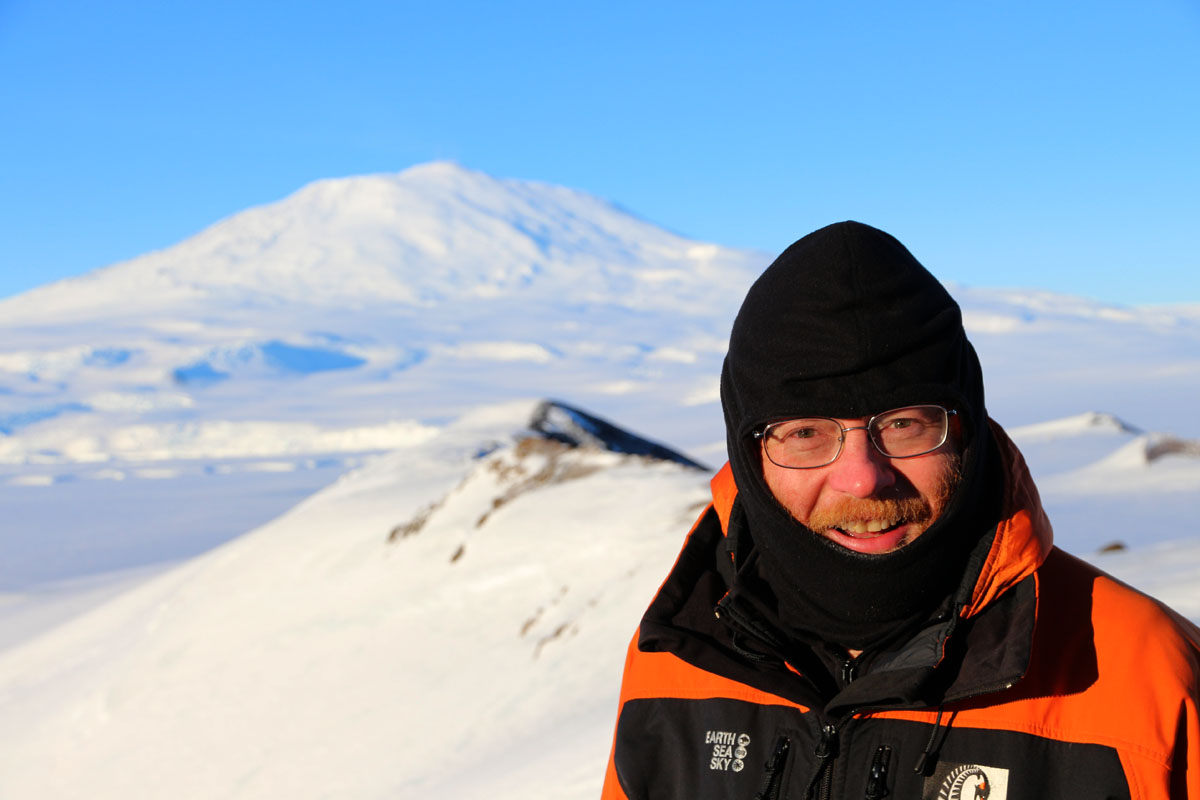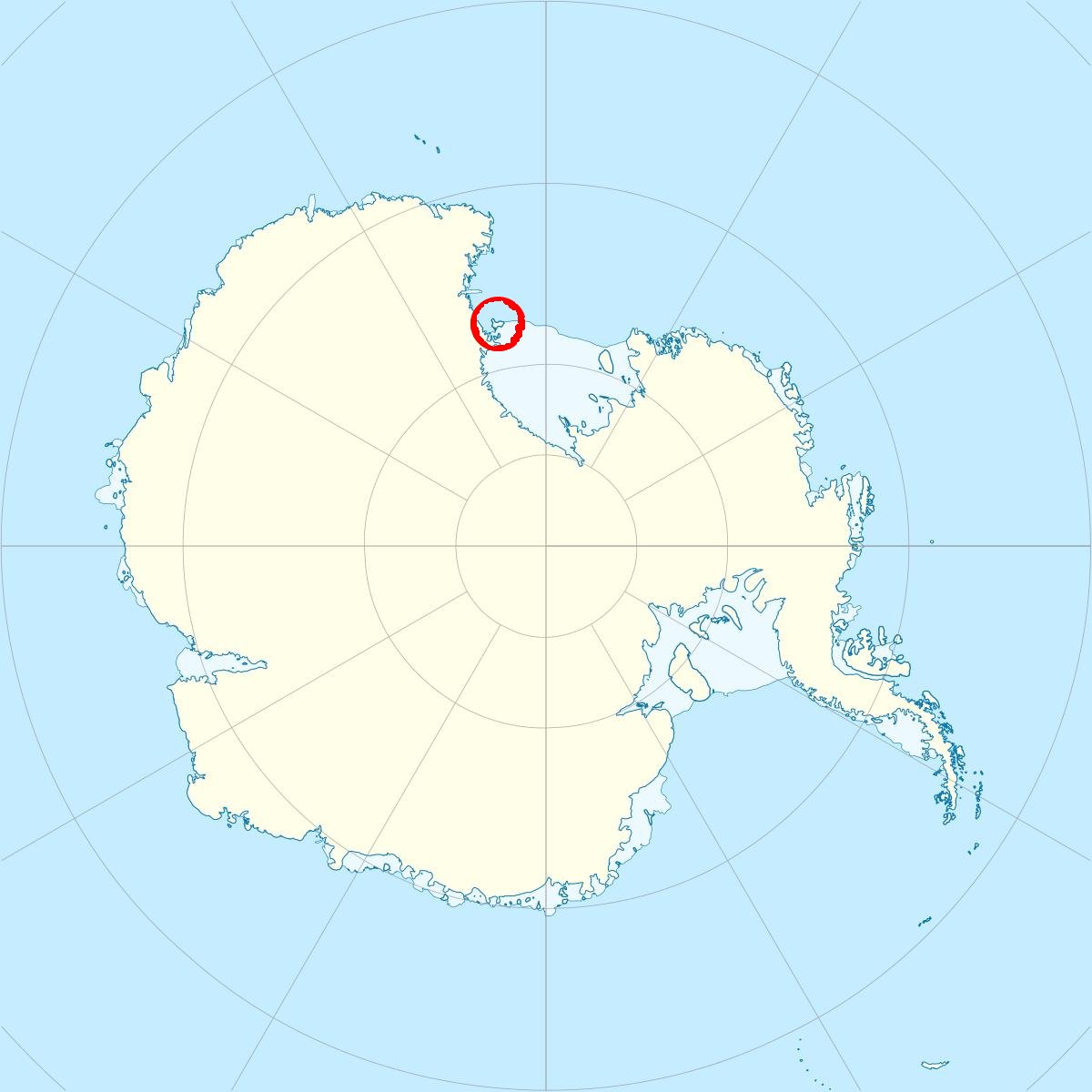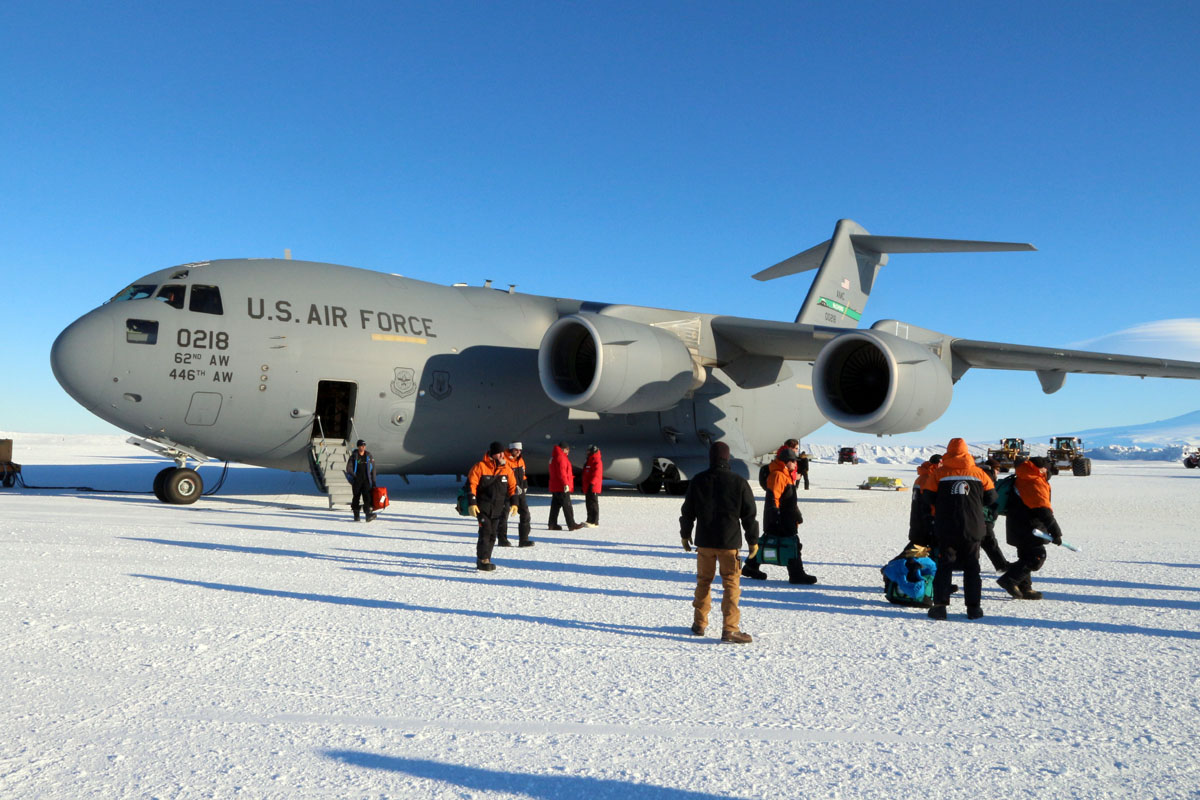
Martyn Unsworth
Fire and Ice: Part I
(Christchurch, New Zealand) Of all the Earth's seven major continents, Antarctica is by far the least explored and its geology relatively unknown owing to the thick ice cover.
I work as geophysicist studying how plate tectonics works and investigating what controls phenomena such as earthquakes and volcanic eruptions. After the long flight across the Pacific, I have just arrived in New Zealand, where I am making final preparations for a research expedition to Antarctica. I will be joining a group of scientists who will be investigating Mount Erebus, which is the world's most southerly continuously active volcano and one of the few volcanoes worldwide that has a lava lake at the summit.
 Mount Erebus is a 3800 m high volcano located on Ross Island at 77°S , and close to the American and New Zealand bases on Ross Island. Unlike many volcanoes, it is not located on a plate boundary, but in the interior of a plate where a hot spot causes magma to rise from a depth of several hundred kilometers and causes the rifting apart of the continent. Discovered in 1841 by a British naval expedition led by James Clark Ross who witnessed it in eruption, Erebus was named after one their ships, the HMS Erebus. The ship, which went on to join the ill-fated 1845 Franklin expedition, was lost in the Arctic in a quest to find the Northwest passage. Amazingly the shipwreck of HMS Erebus was discovered last summer in Nunavut.
Mount Erebus is a 3800 m high volcano located on Ross Island at 77°S , and close to the American and New Zealand bases on Ross Island. Unlike many volcanoes, it is not located on a plate boundary, but in the interior of a plate where a hot spot causes magma to rise from a depth of several hundred kilometers and causes the rifting apart of the continent. Discovered in 1841 by a British naval expedition led by James Clark Ross who witnessed it in eruption, Erebus was named after one their ships, the HMS Erebus. The ship, which went on to join the ill-fated 1845 Franklin expedition, was lost in the Arctic in a quest to find the Northwest passage. Amazingly the shipwreck of HMS Erebus was discovered last summer in Nunavut.
This project is being funded through the New Zealand Antarctic program, and we will be using a geophysical technique called magnetotellurics to look beneath the volcano and find out how the molten rock ascends from deep in the crust to the surface. My research has focussed on this technique for the last 25 years, and at the University of Alberta we have the specialized equipment needed to collect this type of data in the field. Our recent field studies have taken place in locations that included Western Canada, the Himalaya and in the Andes in South America. These have involved work in some difficult environments at high altitude, including work in Bolivia where we worked on a volcano at elevations above 6000 m. (covered in the NYT on Feb. 13, 2012 Growth Spurt at a Bolivian Volcano Is Fertile Ground for Study).
There are four geophysicists on this expedition. Graham Hill is the leader and works for the Institute of Geological and Nuclear Sciences in New Zealand. Hill's research is focussed in part on the active volcanoes on the North Island. I have worked previously with Graham on studies of the eruption of Katmai volcano in Alaska. The two others, Phil Wannamaker and John Stodt, are from the University of Utah and both have many years experience working with magnetotellurics in many parts of the world. All three of my colleagues have previously worked in Antarctica, so I am confident that we can work effectively and safely in the harsh environment. Never the less, working on Mount Erebus will certainly present a whole new set of challenges.
 We have been planning this work for many months, dealing with shipping equipment, medicals and many other preparations, and now we are at the point where the field work begins. We have all gathered now in Christchurch, and we will be issued with cold weather clothing and go through final preparations for departure. Next up, weather permitting, is to fly from Christchurch on a US Air Force C17 for the 5 hour flight to Antarctica. The flights land on the Pegasus runway which is located on the Ross Ice Shelf, close to Scott Base that will be our home for the duration of the project . The New Zealand base is just a few kilometres from the American base at McMurdo. Flights south have been delayed this week by bad weather, so we are hoping that any delay is not too long. Once we arrive there will be several days of training, and then we will move to deploy the instruments for our survey work. This will use a combination of snowmobile and helicopter transport to the field, as the weather permits. It is going to be cold, but as the season progresses it will get warmer, hopefully up to -5°C. In fact it may well be warmer at Scott Base than in Edmonton! As the work progresses, I hope to be able to write more about our work and our experiences living in the Antarctic.
We have been planning this work for many months, dealing with shipping equipment, medicals and many other preparations, and now we are at the point where the field work begins. We have all gathered now in Christchurch, and we will be issued with cold weather clothing and go through final preparations for departure. Next up, weather permitting, is to fly from Christchurch on a US Air Force C17 for the 5 hour flight to Antarctica. The flights land on the Pegasus runway which is located on the Ross Ice Shelf, close to Scott Base that will be our home for the duration of the project . The New Zealand base is just a few kilometres from the American base at McMurdo. Flights south have been delayed this week by bad weather, so we are hoping that any delay is not too long. Once we arrive there will be several days of training, and then we will move to deploy the instruments for our survey work. This will use a combination of snowmobile and helicopter transport to the field, as the weather permits. It is going to be cold, but as the season progresses it will get warmer, hopefully up to -5°C. In fact it may well be warmer at Scott Base than in Edmonton! As the work progresses, I hope to be able to write more about our work and our experiences living in the Antarctic.
More information about Martyn Unsworth's research
View Martyn's team in action via the Live Base Cam.